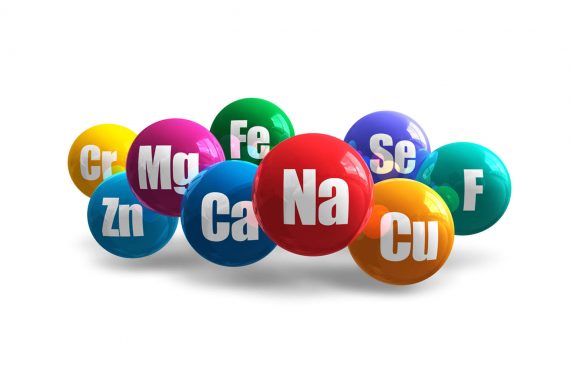Introduction
Ever increasing numbers of people are suffering from allergies. Many individuals are developing allergies not only to dust and pollen, but to foods, household chemicals, smoke and other substances and products as well. Avoiding the allergic food, or substance is one possible answer. However, avoidance is often not practical, or even possible. Also, avoidance does not help identify the primary cause of the allergy problem.
Modern nutritional science and biochemistry are now capable of providing significant insights into the basic causes and correction of allergy problems. When the primary cause is corrected, avoidance is less important and general health is improved as well.
Allergies As A Defense Mechanism
As with many health problems, we often overlook the possible value of allergic reactions. The phenomenon of an allergy is a response of the body to a perceived threat to the body’s integrity. The ability to react is a sign that the body is yet capable of defensive action. Dr. William Frederick Koch wrote that if a cancer patient could develop an allergic response, chances of recovery would be enhanced.
Many individuals in air polluted areas suffer from allergies which represent nothing more than their bodies crying out for cleaner air.
Food allergies serve to keep us away from foods that would tend to unbalance our body chemistry. Environmental allergies similarly warn us about chemicals, or pollens that may be damaging to our health.
When an individual’s allergies go away due to cortisone, or other symptomatic therapy, often the person will later develop a more serious disease. Therefore, we seek not simply to get rid of the symptom, but to understand its origin and correct underlying biochemical imbalances responsible for an allergic response.
Our approach to allergies is that when body chemistry is out of balance many individuals become hypersensitive. This is why they react to foods, or inhaled substances in an excessive manner. In other words, they are unable to cope with environmental stress, because their body chemistry is unbalanced, or weakened. The goal of corrective therapy is to determine why the body is unable to adequately cope with stress and correct this basic problem.
Some of the primary biochemical and nutritional causes for allergies are as follows:
Adrenal Insufficiency As A Cause Of Allergies
Your adrenal glands are two almond-size glands that sit on top of the kidneys. The adrenal glands produce a variety of hormones, including cortisol (an anti-inflammatory hormone) which normally serves to prevent allergic reactions. Normally, when one is exposed to an irritating substance, the body increases its production of these anti-inflammatory hormones which prevents an allergic response from occurring.
Most individuals suffer from allergies because they are not producing adequate amounts of adrenal gland hormones. Often the problem is chronic and worsens when the person is fatigued, or under stress.
An adrenal insufficiency is the major cause of allergies to pollen, dusts, molds, animal hair, foods and environmental chemicals.
An adrenal insufficiency-caused allergy can be readily identified from a hair mineral analysis. As a rule the individual’s sodium and potassium levels are very low, as compared to normal values. In many cases, the ratio of sodium to potassium is also low (less than 2.50:1), which is indicative of adrenal burnout. The precise cause of adrenal insufficiency can be any combination of the following:
- Nutritional, or stress-depleted adrenal glands.
- Insufficient stimulation of the adrenal glands by the pituitary gland.
- Inadequate transport and utilization of adrenal hormones.
The correction of allergies involves correcting one’s current biochemical imbalances.
The adrenal glands specifically require vitamins A, C and E, manganese, copper, pantothenic acid and specific amino acids, to function optimally. Deficiency, or imbalance of these essential nutrients, or toxic substances which block normal physiological functioning, interfere with the synthesis and adequate secretion of the adrenal hormones. If a person is living a particularly stressful lifestyle, a requirement of these essential nutrients is increased.
Nutritional correction is made possible by taking extra quantities of the specific nutrients the adrenal glands require for optimal functioning and eliminating toxic substances such as heavy metals, that severely interfere with optimal adrenal gland activity.
If the problem originates at the level of the pituitary gland, other factors come into consideration. The sympathetic nervous system is responsible for stimulation of the pituitary gland to produce adrenocorticotropic hormones (ACTH). In many allergic individuals the sympathetic nervous system has become exhausted, due either to excessive exposure to stress, or a relative inability to cope with stress. Often, copper toxicity, resulting from an adrenal insufficiency, has overstimulated the sympathetic nervous system until it no longer functions adequately. A nutrition and lifestyle program are required to rest and restore nervous system balance, as well as restore adrenal and pituitary gland activity.
Inadequate transport and utilization of adrenal cortical hormones occur due to factors such as inadequate transport across cell membranes and a deficiency of cell membrane receptors. On a tissue mineral analysis, these problems may be identified by very low sodium and potassium levels, together with high calcium and magnesium levels. Calcium serves to stabilize the integrity of the cell membranes, decreasing their permeability to cellular toxins, which interfere with vital cell functions.
Histamine, High Cell Permeability And Allergies
“Histamine is a biochemical which normally occurs in all soft tissues of the body.” In excessive amounts, histamine produces many of the common symptoms associated with allergies, such as a running nose, sneezing, hives, etc. Individuals who exhibit a pattern of fast oxidation, as determined by a hair analysis, tend to release excessive amounts of histamine into their tissues principally due to an excessive tissue protein breakdown. High histamine levels, whatever the cause, increase one’s proneness to allergies.
Cell permeability refers to the ability of substances to enter and exit the permeable membranes of body cells. Along with higher histamine levels, a fast oxidizer’s cellular membranes are more permeable, usually due to a calcium deficiency. An increased permeability of the cell membranes allows increased amounts of histamine to be liberated into the surrounding tissues resulting in an increased allergic reaction. Both calcium and magnesium deficiencies in these individuals are related to tissue inflammation, hence increased cell permeability.
This particular biochemical mineral pattern (fast oxidation) often results in very acute allergic reactions, such as asthma attacks and shock reactions.
Fast oxidizers usually produce excessive amounts of cortisone, but when they are placed under undue stress and exposed to an irritating substance, they lack sufficient reserves of cortisol to cope with the ensuing inflammatory process. An excess of histamine serves to complicate the existing problem.
It is possible to identify an excessive histamine-caused allergy from a tissue mineral analysis. These individuals have below normal levels of calcium and magnesium, specifically in relationship to their sodium and potassium levels, which are often markedly elevated above considered normal values. In many cases, the ratio of sodium to potassium is also low, indicating excessive tissue catabolism, with a resultant increase in histamine levels.
An allergy sufferer, with the above mineral patterns, requires a different nutritional regimen, one that increases their need for an additional calcium and magnesium intake. Other nutrients such as copper must also be given to help retain calcium and magnesium in body reserves, particularly the bone. Bioflavonoids are helpful to reduce cell fragility and increased cell membrane permeability. We also recommend the use of a thymus glandular substance to assist in regulating excessive activity of their adrenal glands. Excessive activity of the adrenal glands, due principally to stress, results in a calcium, magnesium and zinc deficiency, which further contributes to excessively high histamine levels. Zinc is required to store histamine. A deficiency of zinc results in a release of histamines into the surrounding tissue fluids.
Copper And Other Mineral Imbalances As A Cause Of Allergies
Minerals play many important roles in regulating body chemistry. Not only are minerals required for glandular activity, but they serve to regulate the nervous system and every other system of the body. Toxic amounts of any nutrient will displace other vital nutrients and by doing so, result in various metabolic dysfunctions, including a wide variety of allergies.
Research reveals that copper toxicity is a major contributing cause of allergies, particularly those allergies associated with low cortisol levels. Low cortisol levels result in a chronic inflammatory process. Allergies occur because copper, in excess, deplete vitamin C, folic acid, zinc and other nutrient reserves that are required by the pituitary and adrenal glands. An excess of tissue copper also impairs liver function, resulting in a wide variety of food allergies.
Copper toxicity also results in an over-stimulation of the nervous system which leads to alterations of the pituitary-adrenal axis. Copper toxicity is often involved as a principal cause of brain, or cerebral allergies. A copper deficiency frequently results in a lowering of tissue calcium levels, which serves to contribute to the excess histamine-type of allergies.
Many individuals suffer from a copper imbalance which is not detectable on a standard blood serum test. Copper toxicity can be identified from a hair mineral analysis, where it is indicated by either a high copper level, a high calcium level, a very low copper level, or a low sodium to potassium ratio which indicates adrenal burnout.
Many times, a food allergy problem can be traced to the relatively high copper content of certain foods. Common foods that are high in copper are wheat, corn, soybeans, chocolate and shellfish. Perhaps it is more than coincidence that these particular foods are common causes of food allergies. This topic will be discussed more completely in the section on food allergies.
Other Toxic Metals and Allergies
Other toxic metals such as lead, mercury and cadmium, when present in excessive amounts, contribute to the causation of allergies by replacing vital nutrients that the body requires to defend itself against allergic reactions. This problem is more common than one might imagine.
For example, lead is notorious for its ability to displace calcium from the bone. Because calcium functions as a central nervous system sedative, lead toxicity leads to nervous system irritability, which by over-stressing the adrenal glands, can result in allergies.
Cadmium replaces the essential mineral zinc in many critical enzyme systems. Zinc is also a central nervous system stabilizer and sedative. Zinc is also essential for protein synthesis and normal functioning of the adrenal glands. Therefore, cadmium toxicity can contribute to allergies by destabilizing the autonomic nervous system and by impairing hormonal secretions of the adrenal and pituitary glands.
Toxic metals have received far too little attention because the great majority of doctors do not test for them. However, the United States Environmental Protection Agency has stated that toxic metals are the second worst environmental problem in our country.
Toxic metals are accurately detected from a hair mineral analysis. However, several months of nutritional correction may be needed before these metals are initially revealed. The toxic metals are normally tightly bound by protein ligands and require time to be mobilized. In order for toxic metals to be released, adrenal function needs to be improved.
Toxic metals can be removed from tissue storage through scientific nutrition. Four methods for removal are applied simultaneously;
- nutritional antagonists to the toxic metal are given,
- chelating agents, or agents which bind the toxic metal are recommended,
- eliminative organs are nutritionally supported and,
- the oxidation rate and the energy pathways are corrected.
Source: http://www.arltma.com/











